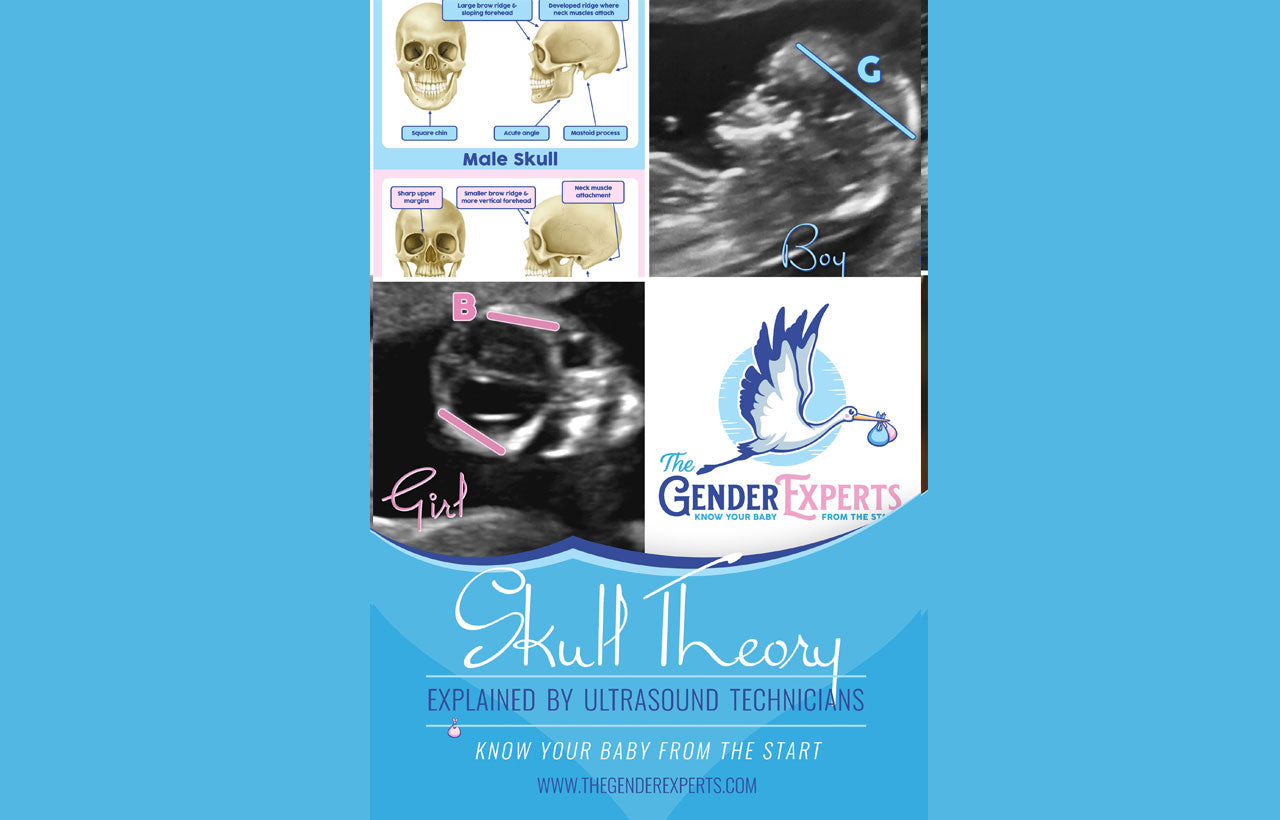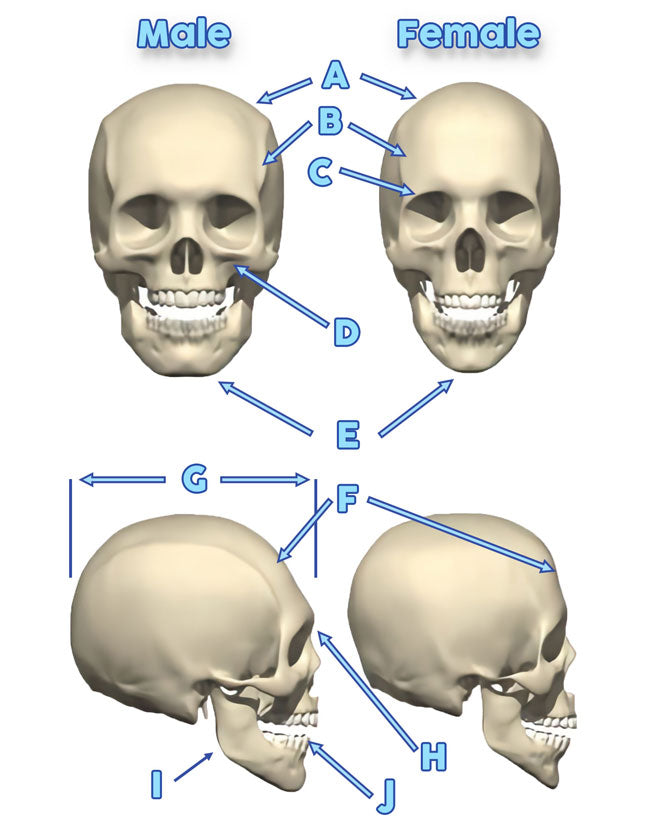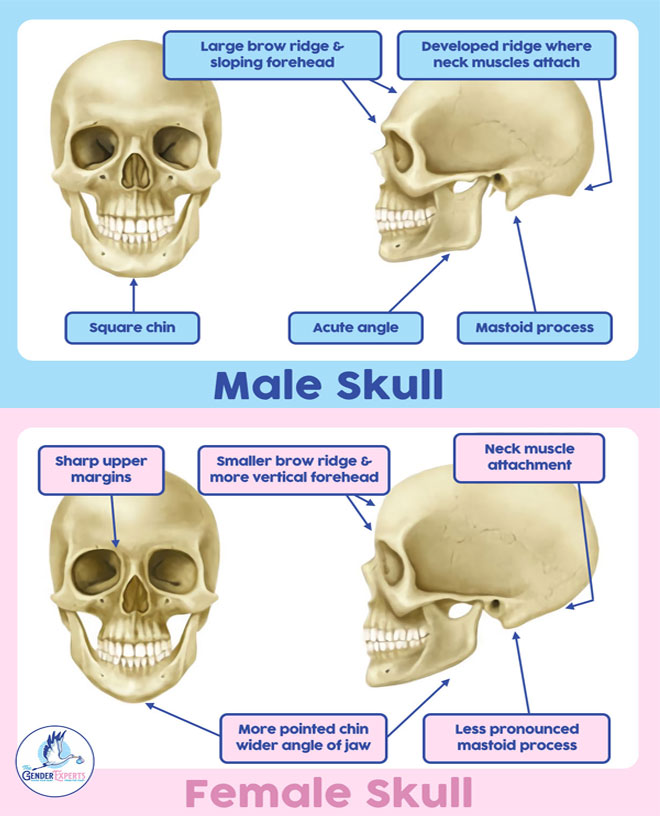
There are ten physical attributes of the baby’s Skull in which a baby boy skull differs from a baby girl. Those differences can give clues to baby’s gender.

What is the Skull Gender Theory and Method?
Skull gender theory works by identifying the shape, size, and other related factors of your baby’s skull while in the womb. These factors are said to develop as early as a few weeks into your pregnancy, which would make gender skull theory an excellent method for predicting your baby’s gender long before the distant 20-week scan that traditionally serves as the first opportunity for gender reveal.
According to skull gender theory, the sex of your baby can be identified by how blocky, round, large or small the baby’s skull is. Boys are said to generally possess larger, blockier skull shapes than girls. Girls generally are said to have more rounded skulls that are also smaller in overall size.
Experts in skull theory gender testing use these attributes to determine whether a baby will be a boy or girl, much earlier than traditional 20 week scans.
The Factors Behind Identifying Sex of the Baby on Ultrasound Scans When it comes to Ultrasound Gender Determination, not even 20-week ultrasound scans and gender sonogram printouts are guaranteed to be 100% accurate, (although they are close to it) and that goes for skull gender theory scans as well.
It all comes down to the baby’s position within the uterus as well as other factors. Making accurate measurements can be difficult if the baby is not positioned in profile, and that applies to gender sonogram readings at any gender determination ultrasound as well. You’ll want to make sure that you have an accurate image that includes the baby positioned in profile, so that the skull can be measured from front to back and so that whoever is reading the scan can get an accurate view of the baby’s skull shape in addition to its size.
Understanding Skull Theory Accuracy
With a wider range of accuracy between 70-95%, statistical and quantifiable research on this theory still needs to be scientifically backed. While it is proven that there are distinct skull differences between adult males and females, perhaps the reason why it is not as clear cut in the womb is due to the various angles of the scan that can matrix the skull to look more like a male or female than it actually is. We theorize that another reason is because the baby’s skull is still going through anatomical and natural changed. That being said, there seems to be a great deal of more success stories online when compared to some of the less respected forms of gender predictions. These predictions, particularly those considered to be ‘old wives’ tales’ such as the ring on a string baby gender test, Chinese lunar gender calendar 2019, or even the original Chinese gender predictor.
If you’re an expectant mother and don’t want to wait until later scans, you can try using gender skull theory to develop an earlier prediction of your baby’s gender. However, don’t expect 100% accuracy—there is still a wide range of variation when it comes to your baby’s skull and his/her gender. Remember, every baby is different—some girls are born larger, and some boys are born smaller.


Products
Select a Product and upload your scan. Our experts will review and deliver The Gender Prediction Report same day, directly to your E-mail.
The Skull Theory: Male and Female Cranium Differences:
Most important skull differences between men and women are indicated by the letter value on the figure to the left and described below:
To determine gender, The Gender Experts use the following criteria:
- (A)The male cranial mass is blockier and more massive compared to the females, which is rounder and tapers at the top.
- (B)Temporal Ridge – this runs along the outer side of the upper skull creating the square shape of the upper head. More prominent in men than women.
- (C) A woman’s supraorbital margin (the ridge above the eyes) is sharper, while the males are round and dull.
- (D) The Zygomatic bone (the cheekbone that lies under the lower eye ridge) is more pronounced on the male skull.
- (E) The Mandible (lower jaw) bone of a woman is rounded, while the male’s is squared.
- (F) Frontal bone forehead structure terminates at the brow. The male forehead is lower and more sloping.
- (G) Men have a deeper cranial mass.
- (H)The superciliary arch is large and pronounced in the man.
- (I) A males gonion (the most posterior inferior point on the angle of mandible) is more flared out and sharply angled.
- (J)The teeth of men tend to be larger.
Gender Calendars and Gender Charts vs. the Skull Theory
How does Skull Theory compare to ancient Chinese gender predictors, a gender calendar or a lunar gender chart? Considering that anthropologists have been using skull theory to attempt to identify the gender of ancient people for decades, it has quite a leg up in terms of legitimacy relative to some of the old wives’ tales like the Indian gender prediction chart or ring gender test. Baby skull theory is widely seen as a promising way to get a relatively accurate prediction early in the baby’s development.





